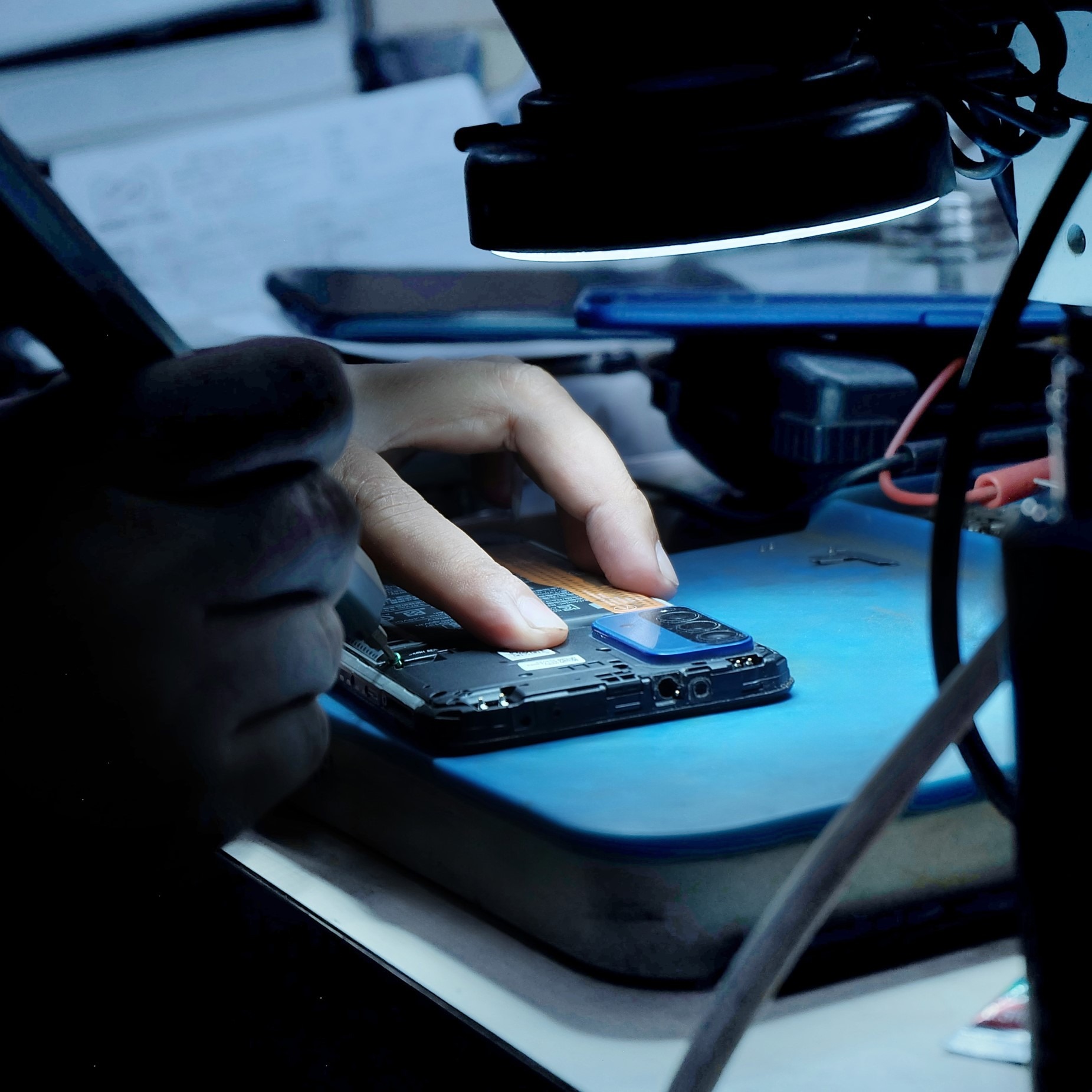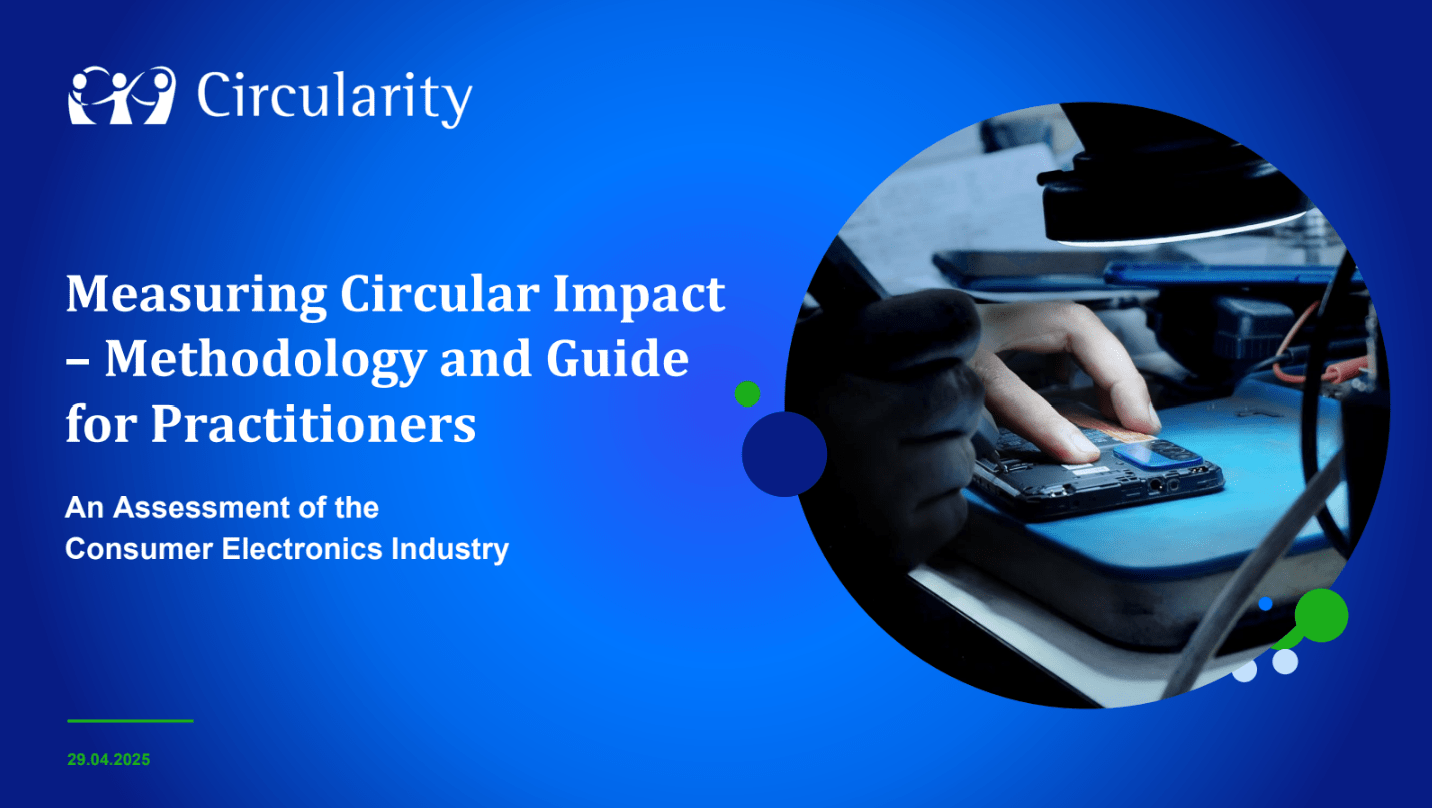From smartphones to laptops to gaming consoles, consumer electronics have become essential to daily life – but they also come with a heavy environmental cost. Millions of devices are produced each year, many of which are used only briefly before ending up in drawers or being binned. Many businesses and consumers want to do more to tackle this but lack a clear way to compare circular to traditional linear business models.
A new industry report co-developed by Systemiq and Circularity – alongside Fraunhofer IZM, Deloitte and 12 leading industry partners – introduces a methodology that could help change that. The Circular Business Model Impact (CBMI) framework offers a practical way to measure the real environmental impact of circular business models – like resale, rental, repair, and refurbishment – based on how people and businesses actually use their devices.
The findings show just how powerful these models could be: in Germany alone, widespread adoption of circular strategies could prevent millions of new devices from being manufactured each year, while cutting CO₂ emissions by hundreds of thousands of tonnes.
In the case of smartphones alone, the impact is particularly striking. If 80% of users in Germany rented or bought used smartphones, the country could avoid the production of 2–3 million new devices per year and reduce emissions by up to 200,000 tonnes of CO2 annually. This could be a crucial impact lever for the German system which doubled its consumption of electrical goods between 2012 and 2022.
Beyond recycling: making use last
Recycling has long been the go-to sustainability measure for electronics – but it addresses only part of the problem. The CBMI methodology shifts the focus upstream, looking at how long devices stay in use, how often they’re repaired or returned, and what happens at the end of their life.

“Most emissions and resource use are locked in before a device ever reaches the consumer. Extending product lifetimes is one of the most effective ways to reduce environmental impact – and now we can actually measure how well that’s working.”
Dr. Manuel Braun, Senior Director at Systemiq
Among the key insights:
- Using devices longer really works: Extending the use of electronics by just 30% can reduce annual emissions by up to 20%.
- Rental and resale increase utilisation: These models are especially effective for low-use devices like tablets and gaming consoles, reducing emissions by up to 19%.
- Professional refurbishment pays off: In B2B contexts, refurbished devices can stay in active use for up to 7 years, slashing emissions and reducing e-waste.
- Even standard second-hand smartphone resale can cut emissions by around 20%, while rental models typically increase lifespan by more than 17%.
Surprisingly, the footprint from logistics and refurbishment is relatively small – around 3% of a product’s total emissions. That means the real climate gains come from maximising the useful life of products.
Why circular models fall short – and how to fix them
Despite the potential, most circular business models today reach only 20–50% of their maximum impact. Many devices – especially in the workplace – go unused after their first life. Reasons range from lack of return pathways and repair incentives to concerns about data security.
The CBMI framework offers not only a new way to measure circularity, but also over 25 practical levers for businesses to act on – from improving return logistics and fleet management to designing incentives that reward longer use.
A systems lens for smarter solutions
The report was developed by Circularity in partnership with Systemiq, Fraunhofer IZM, Deloitte, and 12 major industry players across the electronics lifecycle – Vodafone, Telekom, Assurant, Rebuy, Grover, FixFirst, re!commerce, Foxway, Ingram Micro Lifecycle, Reverse Logistics Group, Circulee, and Everphone.
At Systemiq, we believe that transforming consumer electronics means thinking in systems – understanding how products move, where the friction points are, and what it takes to shift behaviours at scale. The CBMI method gives companies, investors, and policymakers the clarity they need to design strategies that truly make a difference, as well as a methodology that could be applied in numerous industries beyond electronics in future.
As the electronics sector continues to grow, so does the urgency to decouple innovation from extraction and waste. Circular business models offer a promising path forward – and now we can finally measure their real impact.


